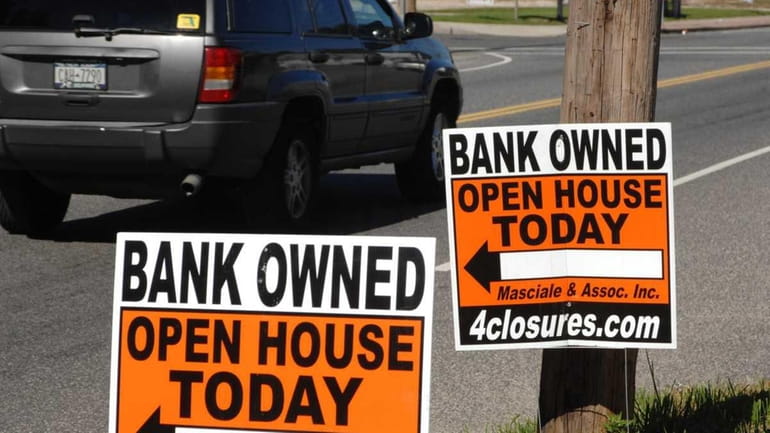S&P ratings probed in mortgage meltdown

Signs, like these in Mastic during October 2008, hinted at the problems to come in the mortgage market. Eventually millions of Americans lost homes as the mortgage market imploded. The U.S. Justice Department is investigating Standard and Poor's ratings of bundled troubled mortgages sold to investors, according to a story Aug. 18, 2011. Credit: Newsday, 2008 / Michael E. Ach
WASHINGTON -- The Justice Department is investigating whether the Standard & Poor's credit ratings agency improperly rated dozens of troubled mortgage securities in the years leading up to the financial crisis, The New York Times reported Wednesday.
The investigation began before Standard & Poor's cut the United States' AAA credit rating this month, but it's likely to add to the political firestorm created by the downgrade, the newspaper said. Some government officials have since questioned the agency's secretive process, its credibility and the competence of its analysts, claiming to have found an error in its debt calculations.
The Times cites two people interviewed by the government and another briefed on such interviews as its sources. According to people with knowledge of the interviews, the Justice Department has been asking about instances in which the company's analysts wanted to award lower ratings on mortgage bonds but may have been overruled by other S&P business managers.
If the government finds enough evidence to support a case, it could undercut S&P's long-standing claim that its analysts act independently from business concerns. The newspaper said it was unclear whether the Justice Department investigation involves the other two major ratings agencies, Moody's and Fitch, or only S&P.
S&P and other ratings agencies reaped record profits as they bestowed their highest ratings on bundles of troubled mortgages, making them appear less risky and thus more valuable. They failed to anticipate the deterioration of an economic bubble in the housing market that devastated the U.S. financial system.
Companies and some countries -- but not the United States -- pay the credit ratings agencies to receive a rating, the financial market's version of a seal of approval.
Before the financial crisis, banks shopped around to make sure rating agencies would award favorable ratings before agreeing to work with them. These banks paid as much as $100,000 for ratings on mortgage bond deals, according to the Financial Crisis Inquiry Commission, the Times said.
Critics say this business model is riddled with conflicts of interest since ratings agencies might make their grades more positive to please their customers.
The Times said the Securities and Exchange Commission also has been investigating possible wrongdoing at S&P, citing a person interviewed on that matter.
Ed Sweeney, a spokesman for S&P, said in an email to the Times: "S&P has received several requests from different government agencies over the last few years. We continue to cooperate with these requests. We do not prevent such agencies from speaking with current or former employees."
Representatives of the Justice Department and the SEC declined to comment on whether they are investigating the ratings agencies, the newspaper said.
